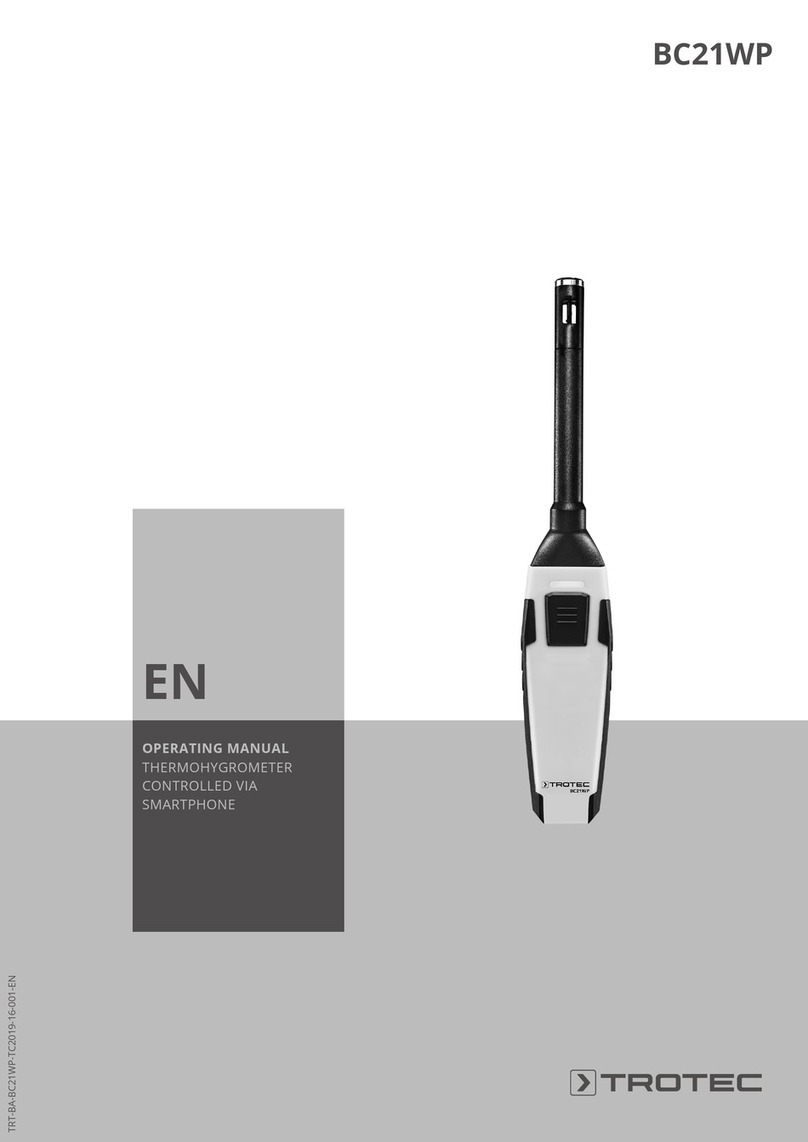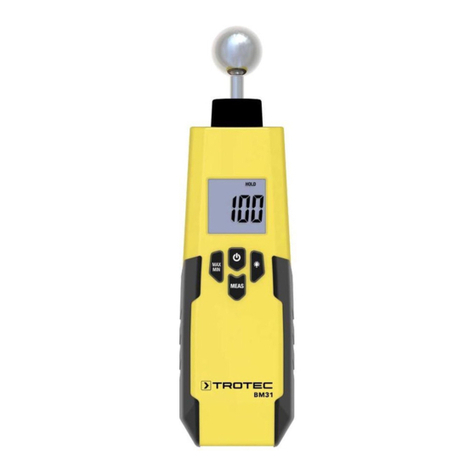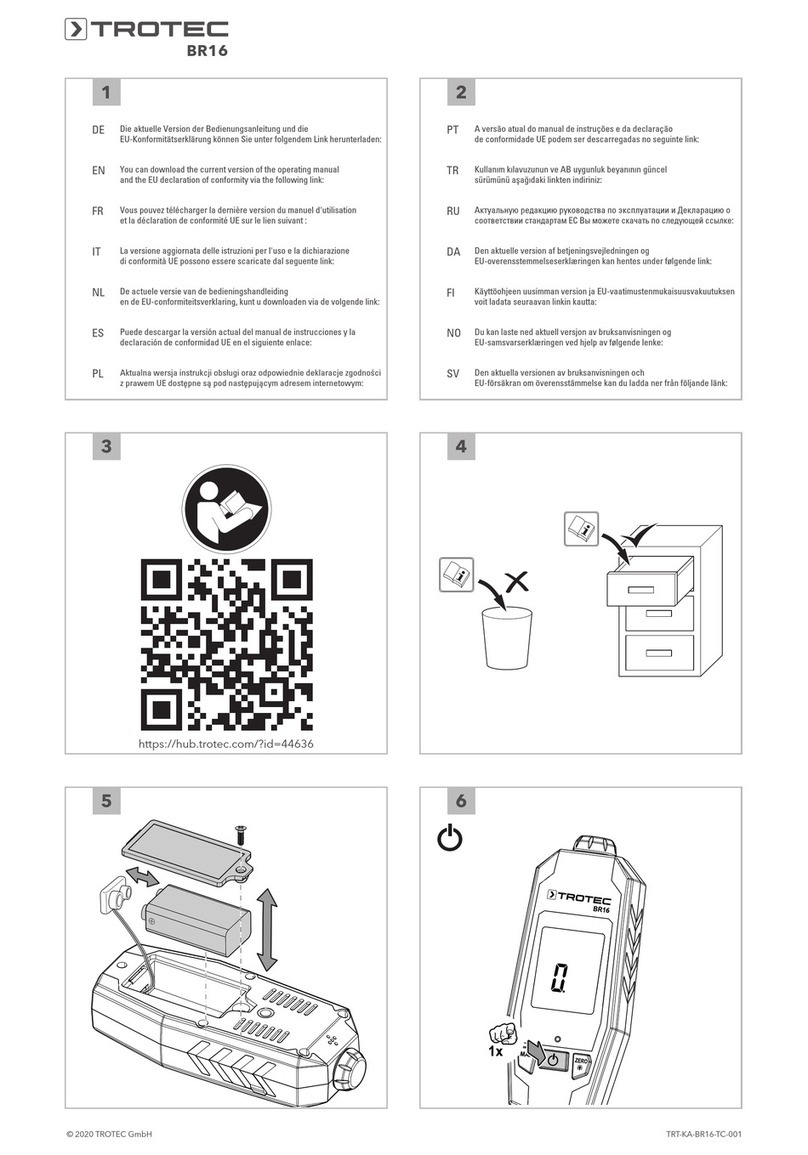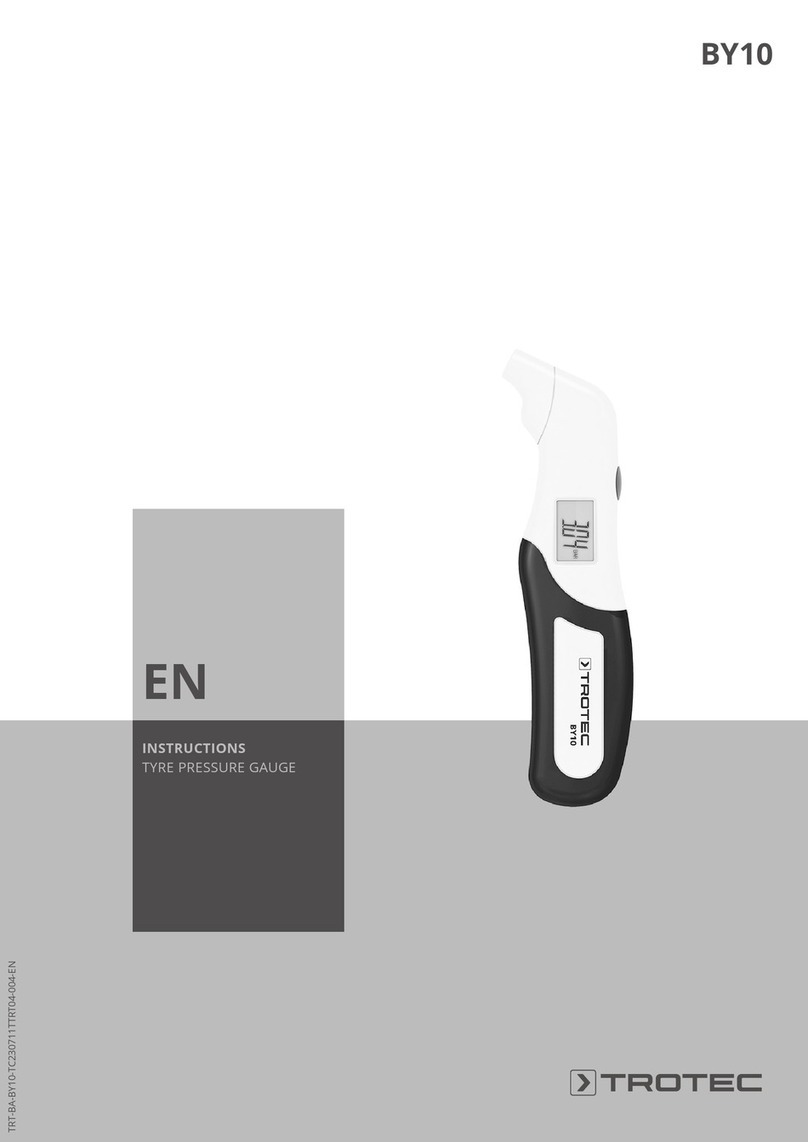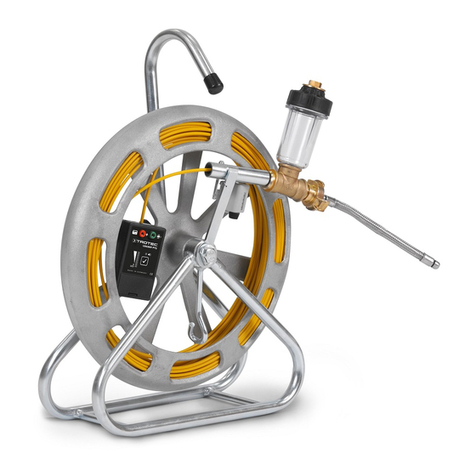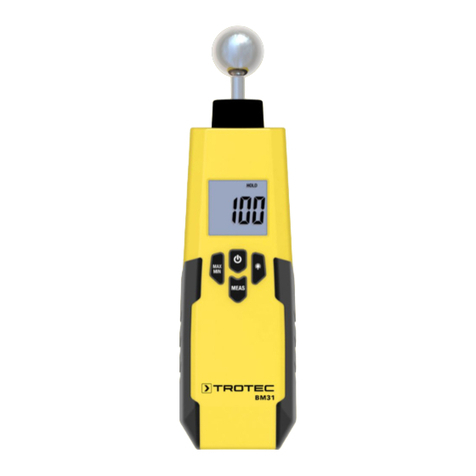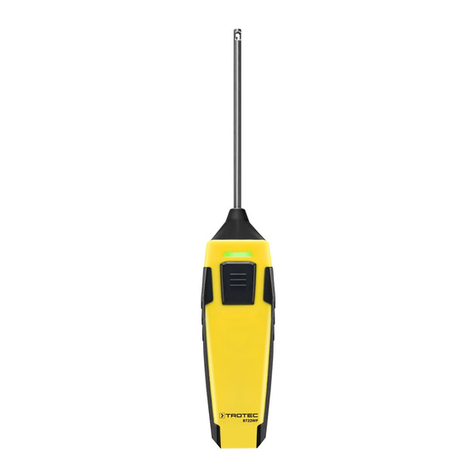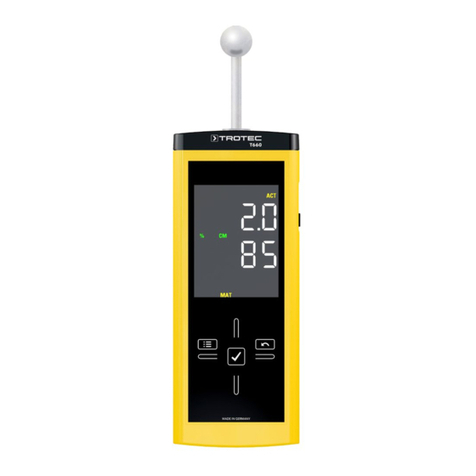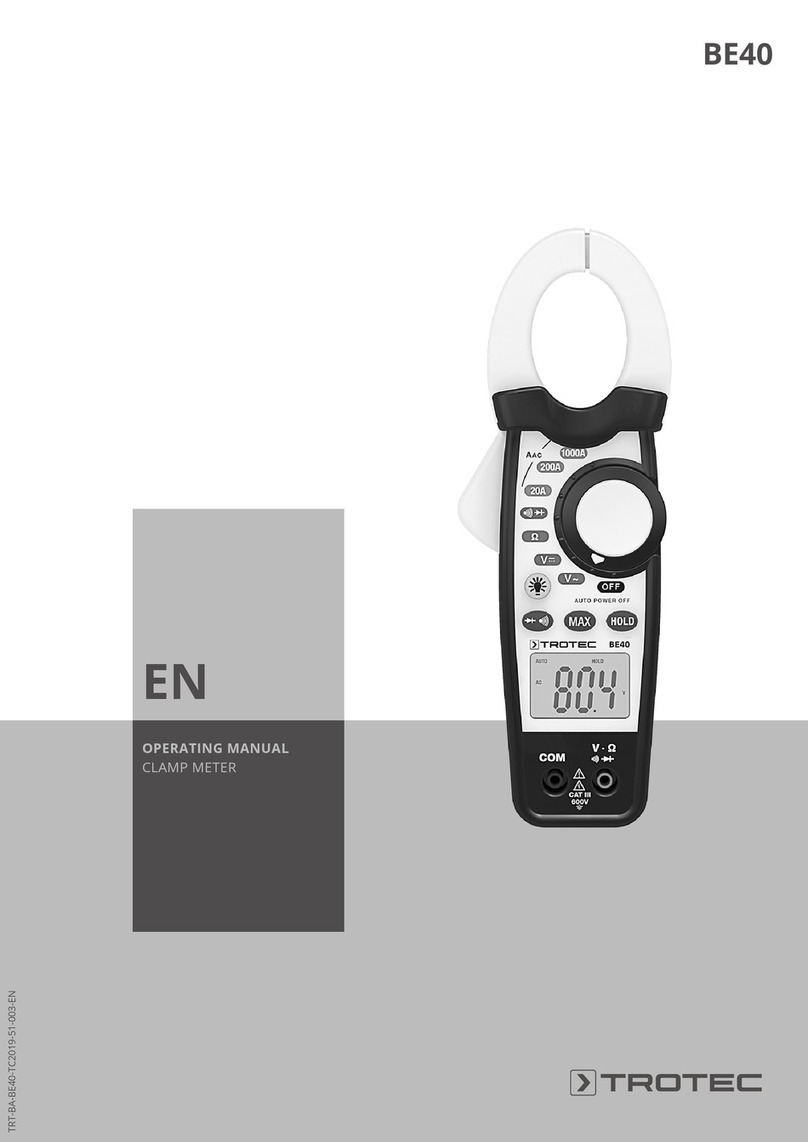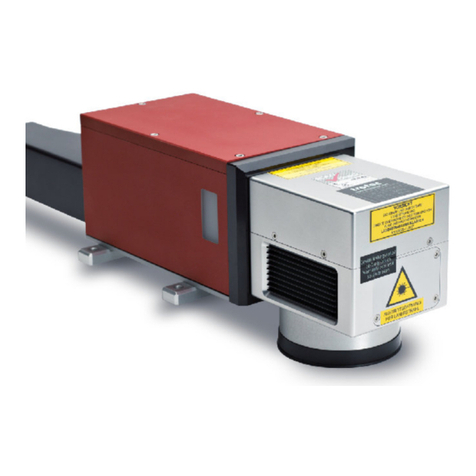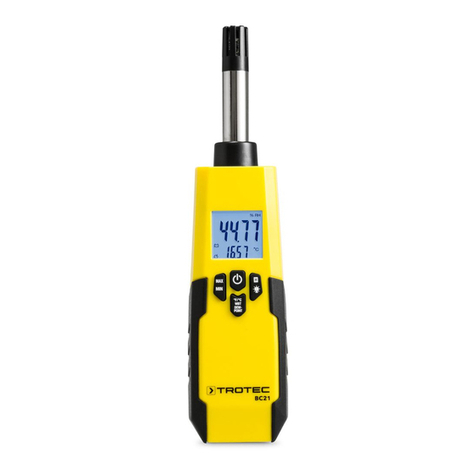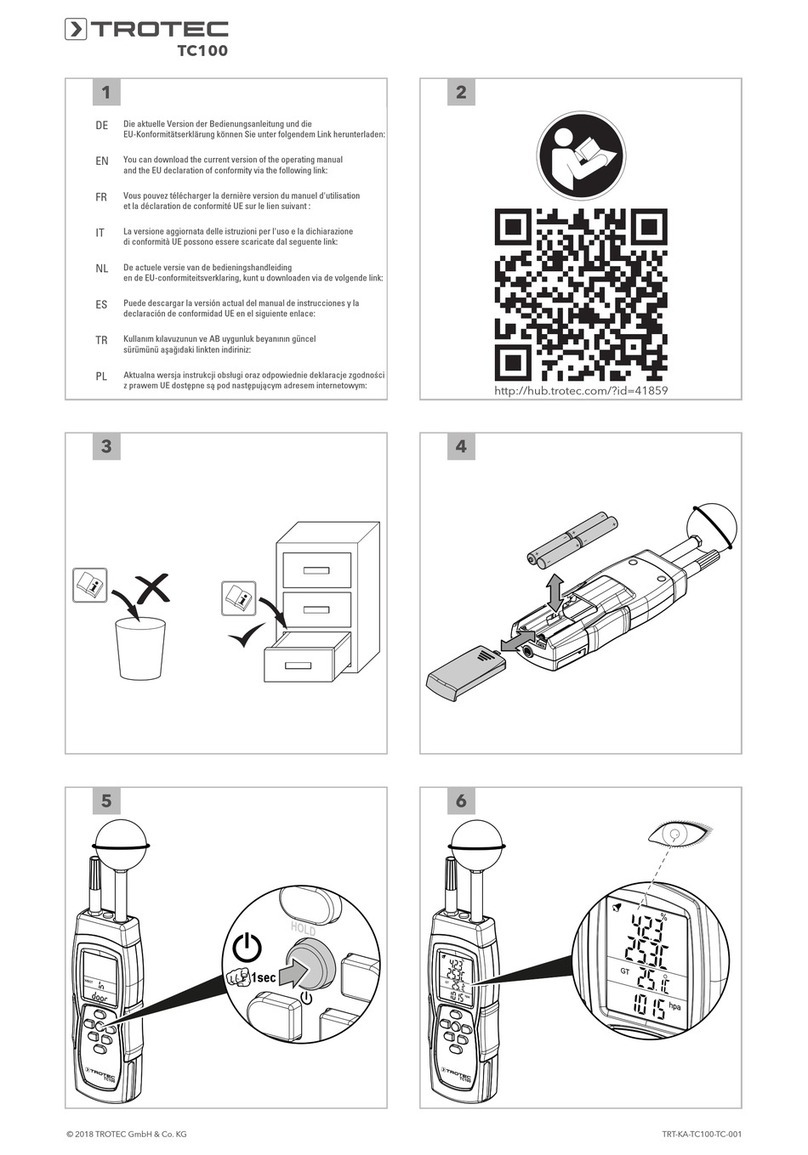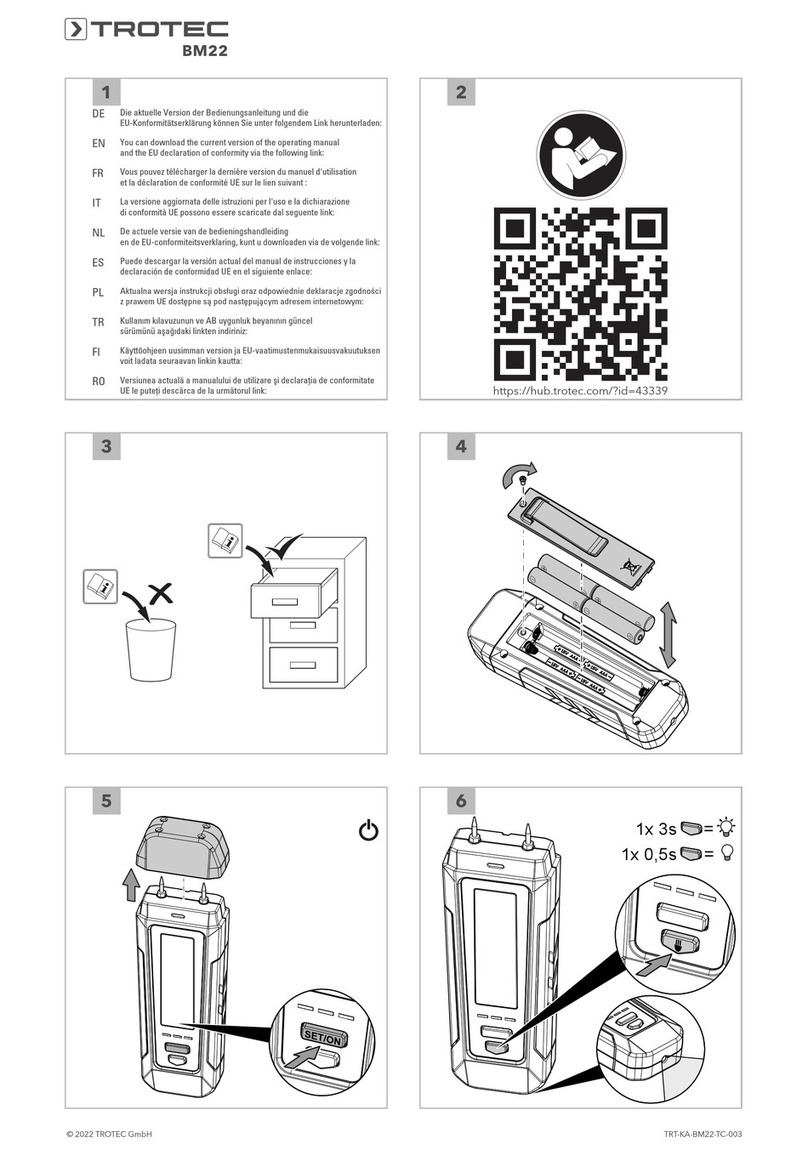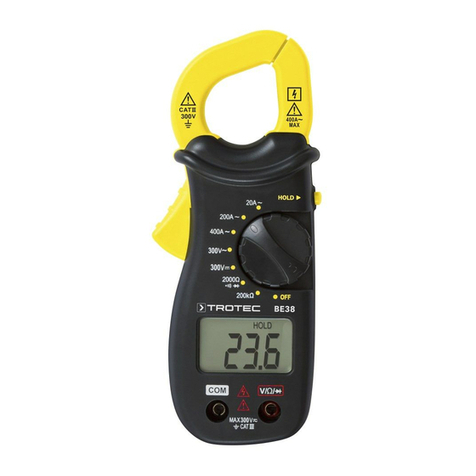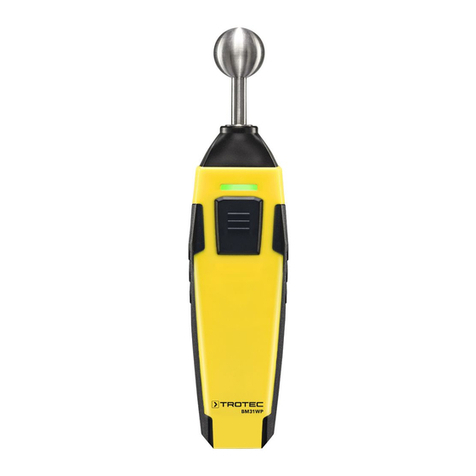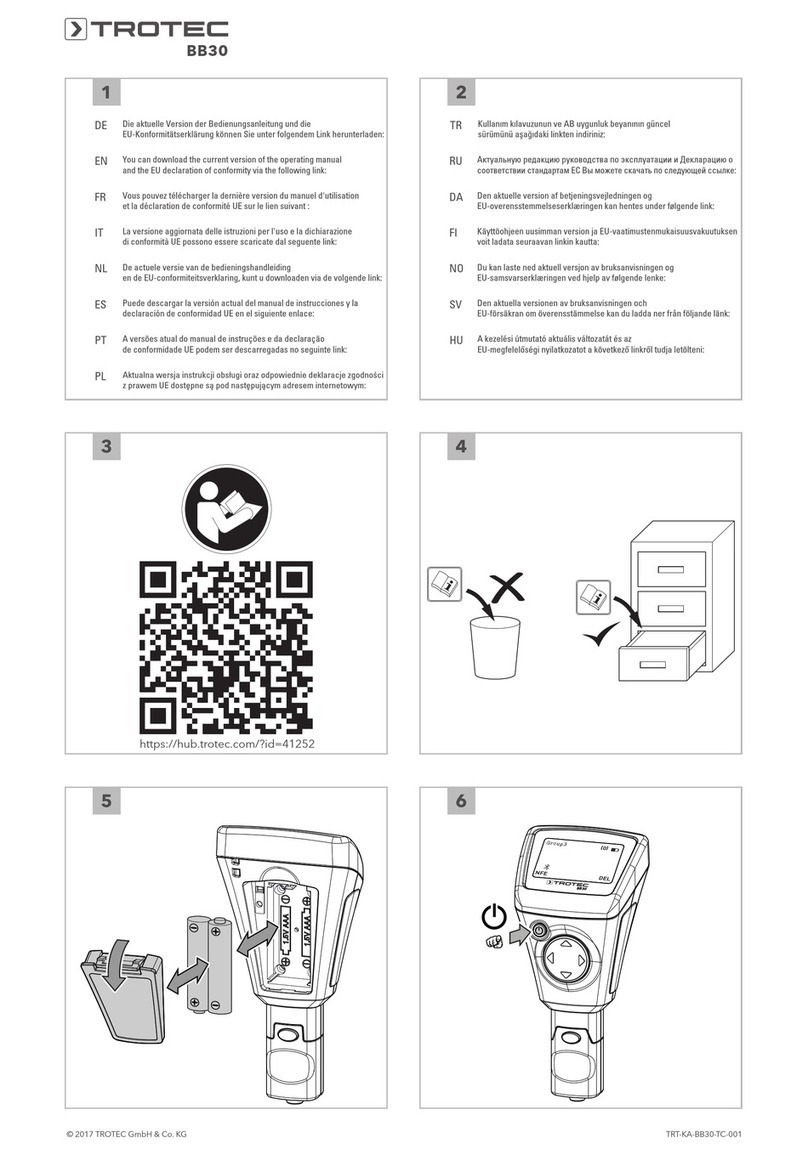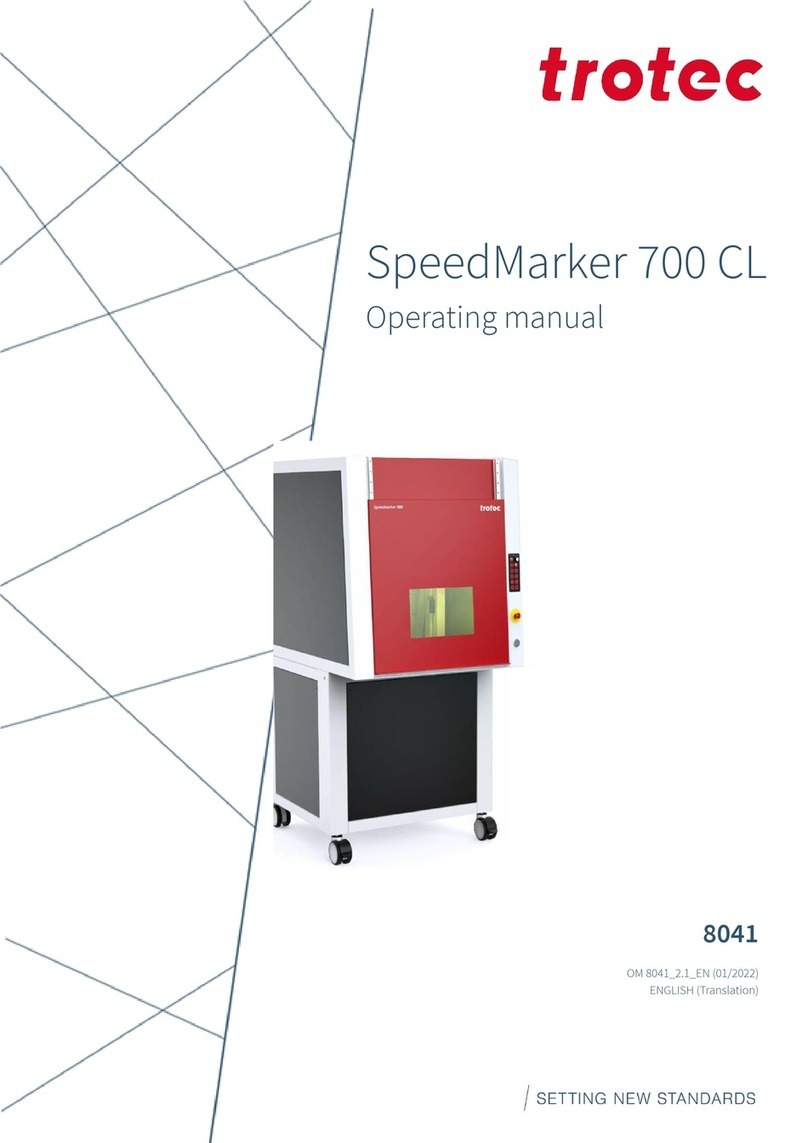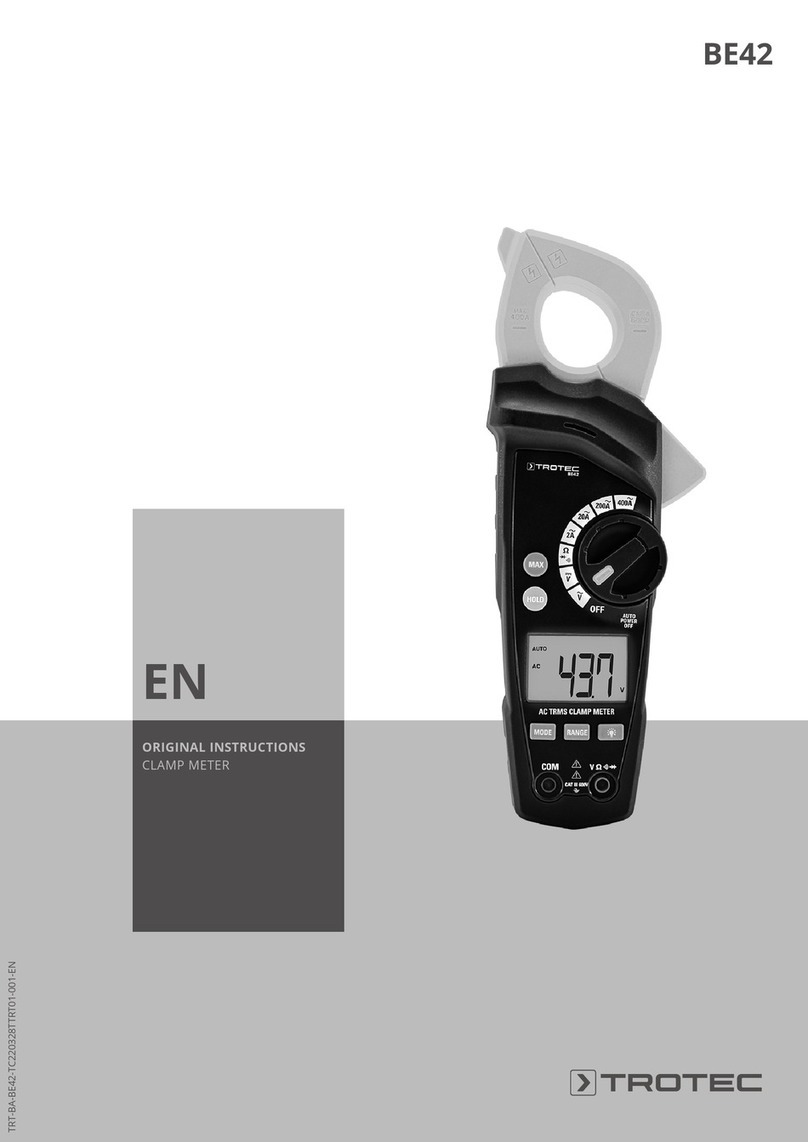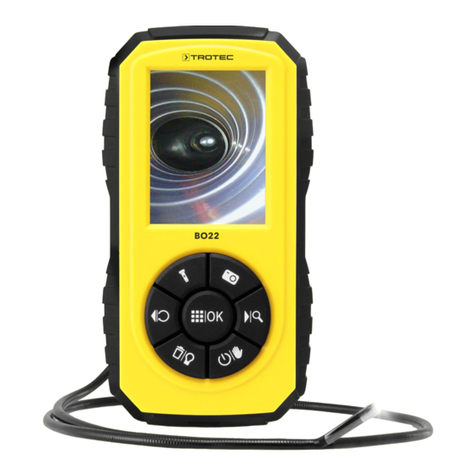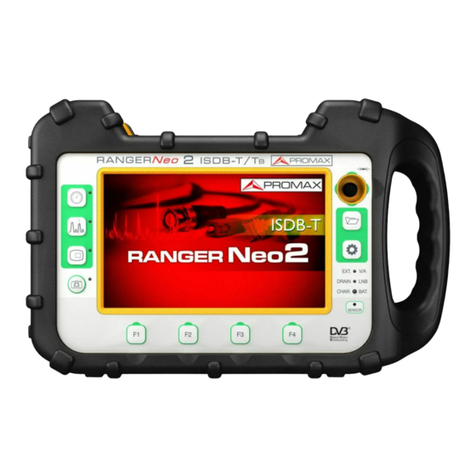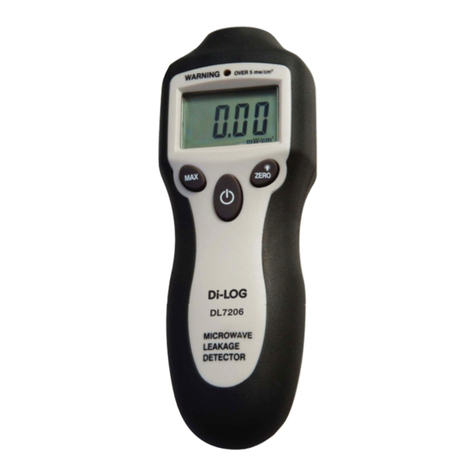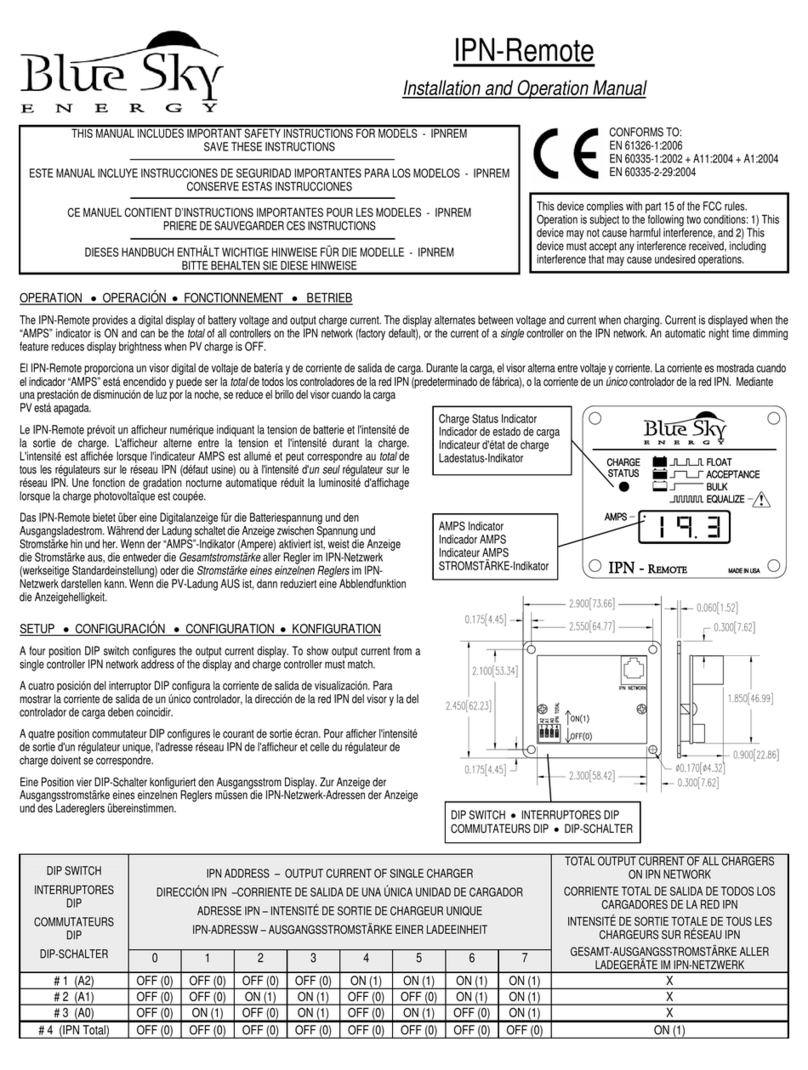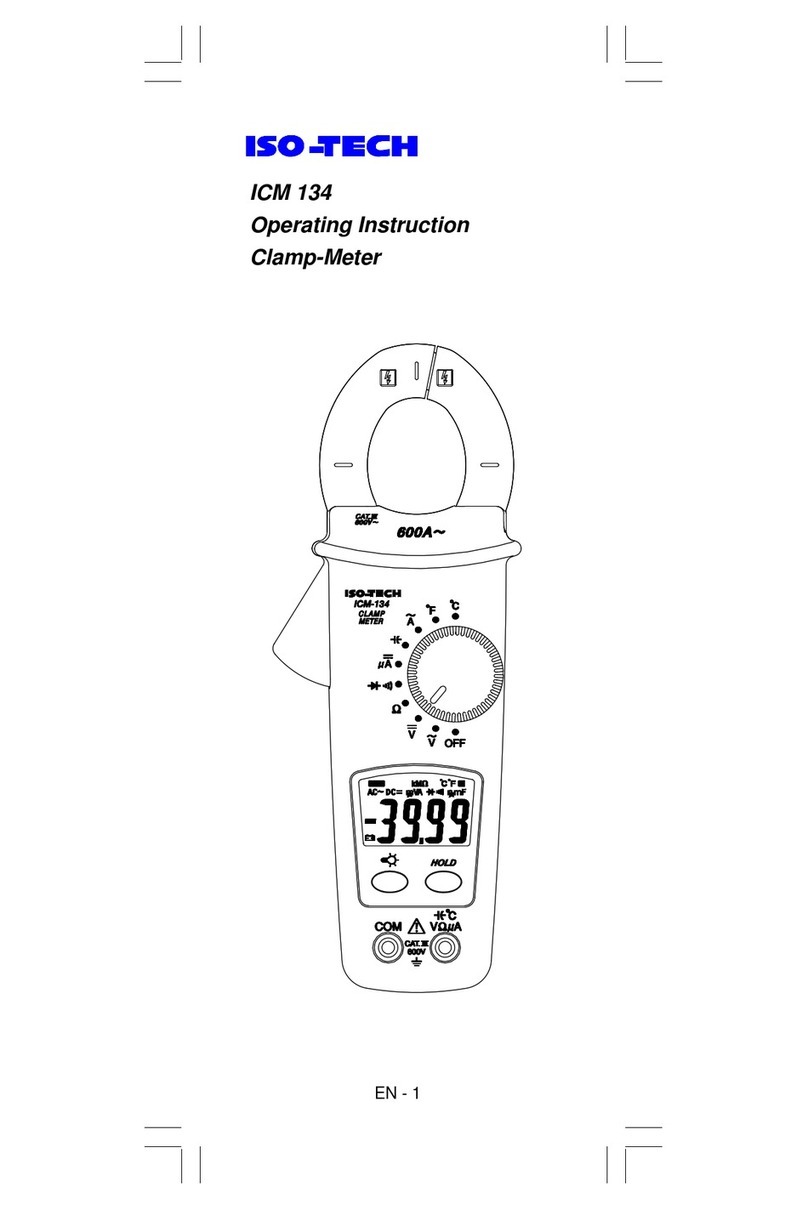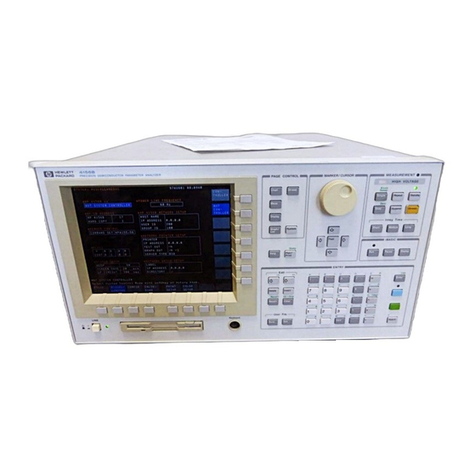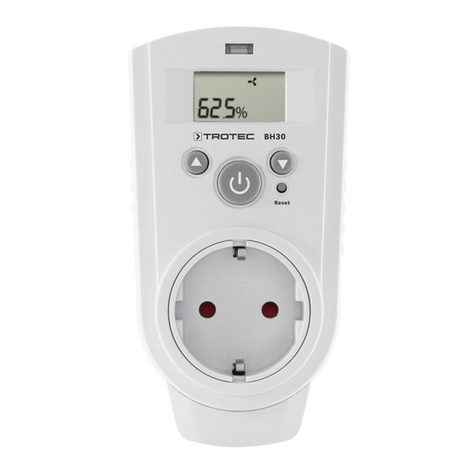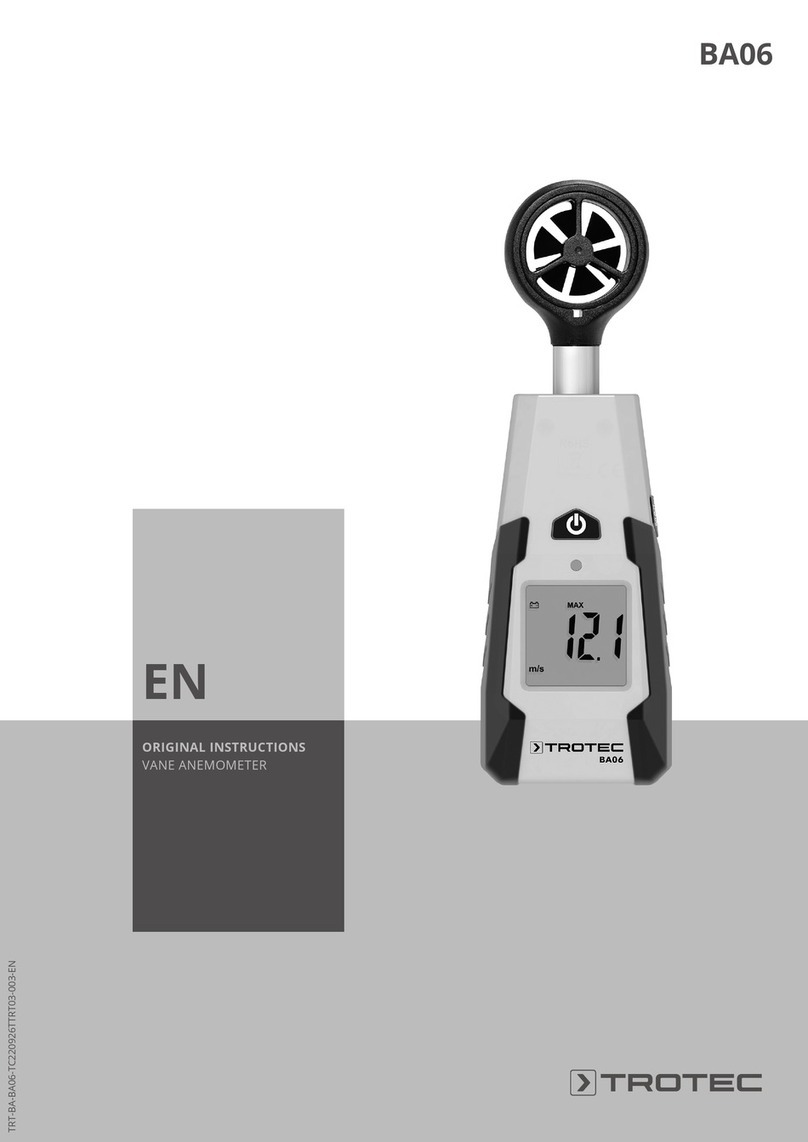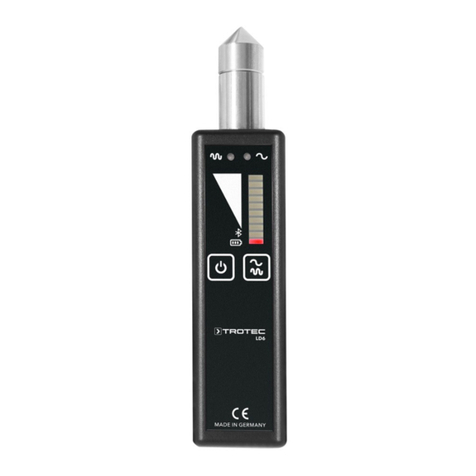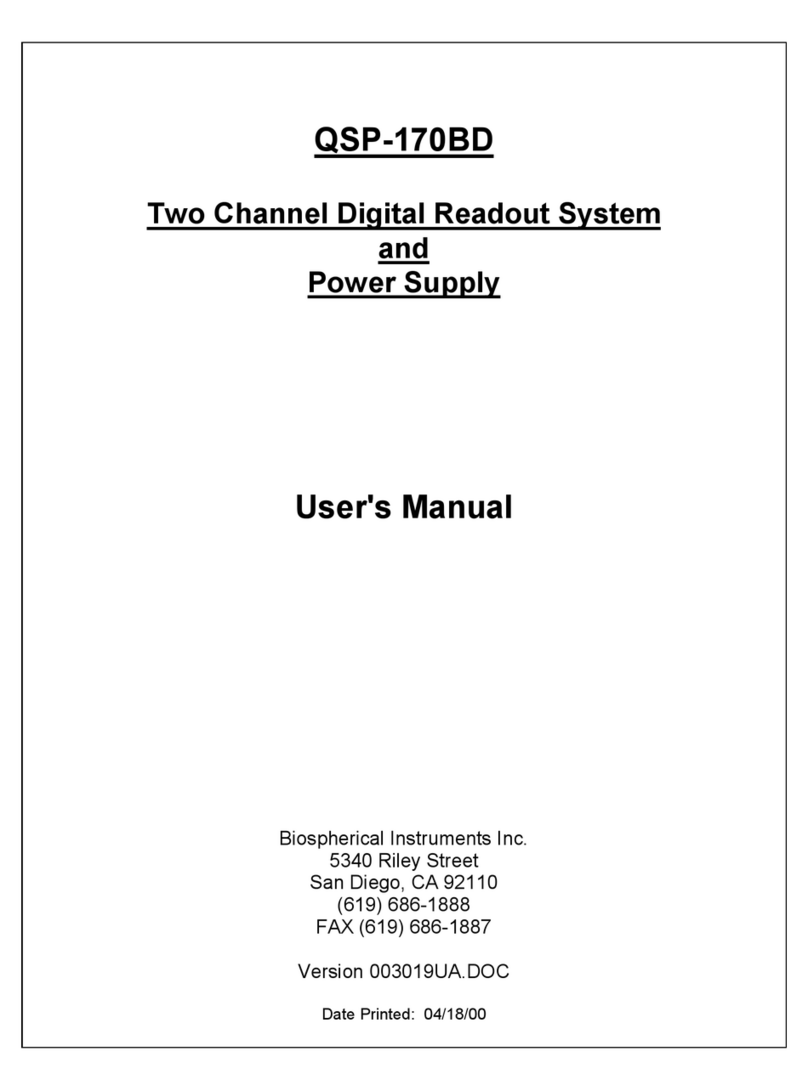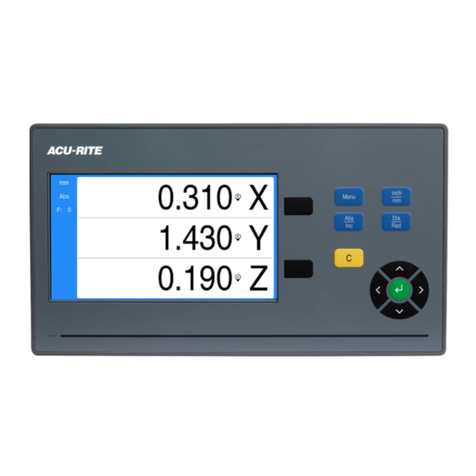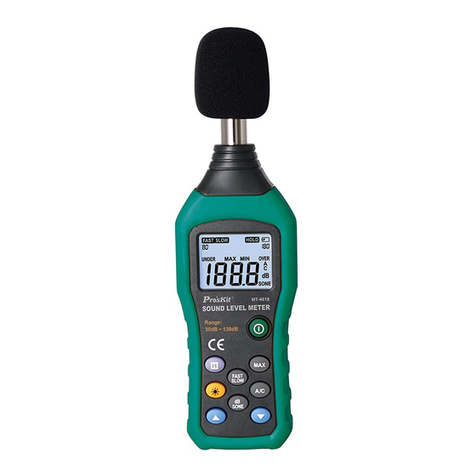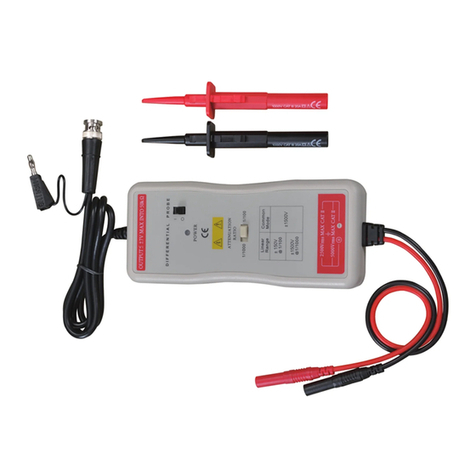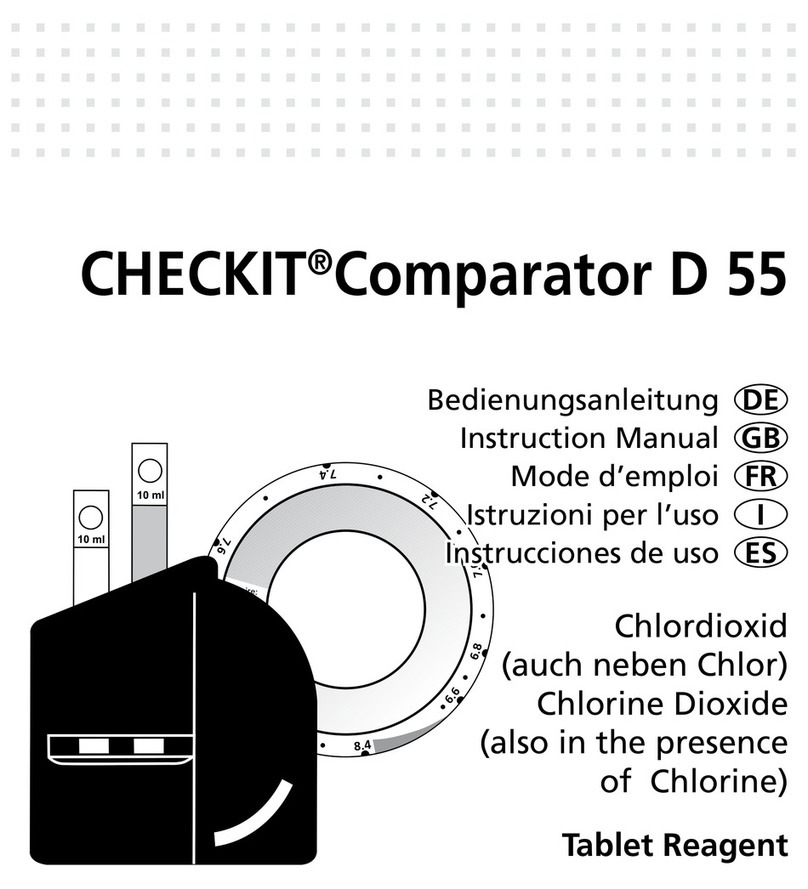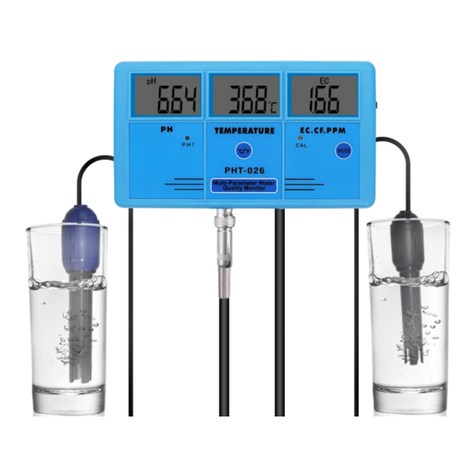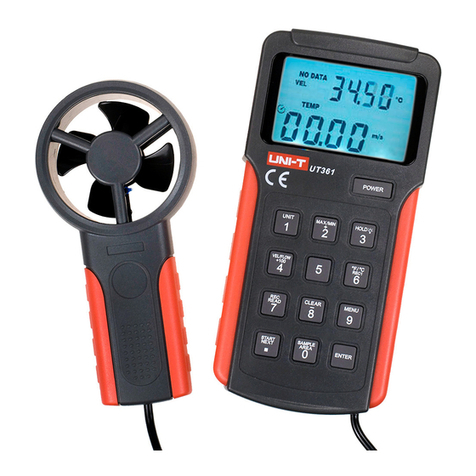
EN 7
moisture indicator BM31
Notes on use regarding the material moisture measurement
No further settings are required for the quick determination of
the material moisture at the device. Nevertheless, when
assessing the measurement results one has to bear in mind that
the results can be influenced by various factors.
• Performing the measurement
– When the ball head is held to corners (e.g. window
frames), the measured value is generally higher,
because there is more matter in the measuring head's
stray field. Toward a corner a distance of more than
8 to 10 cm has to be observed.
– When performing the measurement, always hold the
ball head perpendicular to the material to be measured.
Press the ball head firmly against the surface to be
measured and make sure not to tilt it.
• Measuring depth
– Depending on the material's bulk density and degree of
moisture penetration, the device's penetration depth
amounts to5 to 40mm. Conclusions regarding zones
located at a lower level cannot be drawn.
• Material characteristics
– Increased occurrences of soluble salts in the measured
material can distort the result of the measurement. The
more salts present, the higher the conductivity of the
material and the higher will be the displayed
measurement value.
– If possible, do not measure wood with a temperature
below -5 °C. Too low wood temperatures distort the
result of the measurement.
– Material aggregates and their concentration, e.g. in
screed or concrete, can also considerably influence the
height of the measured value.
– The material should be preferably homogenous and not
have any air pockets.
• Electrically conducting materials or electrical fields
– If a construction material contains electrically
conducting substances, the dielectric constant is also
increased, which then simulates high moisture values.
Consequently, a too high measured value will be
displayed.
– If the material to be measured contains metal (e.g.
nails, screws, lines, pipes, etc.) and is situated within
the sensor's measuring field, the measured value
skyrockets due to intense reflections.
– From visual inspection it is not always apparent,
whether there are any electrically conducting
substances inside the construction material. Some of
the main error sources here are in particular
reinforcements, metal laminations and conducting
insulation such as slag in timber beam ceiling
constructions. Especially in case of insulation materials
with metal lamination, measured values are often
misinterpreted.
– Avoid static charge of the material to be measured due
to friction. Static charge distorts the measurement
result.
– With a wood moisture of less than 10%RH,
electrostatic forces may occur at the good to be
measured. This can falsify the result of the
measurement. Experience has shown that this occurs at
the outlet of veneer drying plants. Remove the static
charge by use of suitable grounding measures.
– For optimum conditions neither electrical fields nor
conducting materials should be present.
• Surface condition
– Before measuring, the measuring point is to be cleared
of any impurities (e.g. paint residues, dust).
– Oily and/or aqueous timber preservatives affect the
measurement result.
– Rough surfaces will always result in a too low
measured value.
– The surface of the material to be measured should be
as level as possible to permit thorough contact of the
measuring probe.
• Moisture distribution
– With material thicknesses of less than 2 cm there is a
danger of humidity values from adjacent material layers
affecting the measured value.
– Ideally, the moisture should be evenly distributed within
the material to be measured.
Quantitative conclusions about the moisture content of the
mineral material to be measured can only be drawn by applying
the Darrprocedure or the CMmethod.









